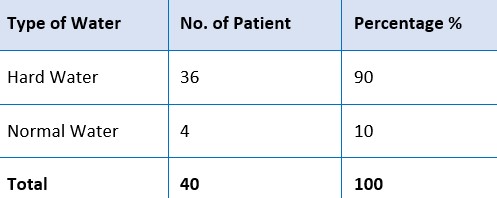Study to evaluate the efficacy of Vibhitaka Majja Taila Nasya in Premature Graying of Hair (Akaal Palitya) - A Clinical Study
DOI:
https://doi.org/10.21760/jaims.9.6.4Keywords:
Nasya, Palitya, Premature Graying of Hair, Rasa Dhatu Pradosha, Vibhitaka Majja TailAbstract
Incidence of Premature Graying is increasing day by day. Incidence as per W.H.O is largely between the age group of 25-30 years. Hair colour contributes immensely in physical appearance and self-perception. It is well known that Premature Graying of Hair results from a reduction of pigment, but exact underline cause for this is still mystery for medical fraternity. In contemporary medical science, there is as such no effective treatment for premature graying of hair but various previous researches in Ayurveda have shown the potential in its prevention and management. Acharya Charaka and Acharya Sushruta have quoted Premature Greying of Hair as Akaal Palitya and mentioned it as Ras Dhatu Pradosaja Vikara.[5,6] In Ayurveda classics various external and internal medications have been described for this disease and Vibhitaka Majja Taila Nasya is one of them mentioned by Acharya Sharangdhara.[7] So, on the basis of classical references and researches Vibhitaka Majja Taila Nasya has been selected for this study and a clinical trial was conducted on 40 patients with Greying hair. These patients were divided into 2 groups. Group A (trial group - Vibhitaka Majja Taila Nasya) and Group B (control group). After 90 days of clinical, results showed significant improvement in subjective parameter like colour of hair, dry splitted hair, burning on scalp.as well as on objective parameter like GSS score and Serum Ferritin level.
Downloads
References
Trüeb RM. Pharmacological interventions in aging hair. Clin Interv Aging. 2006; (Last cited 15 May 2020): available from 1:121–9. [PMC free article] [PubMed] [Google Scholar].
Tobin DJ Paus R. Graying : Gerontobiology of the hair follicles pigmentary unit. Exp Gerontol 2001; (Last cited 16 May 2020): available from 36:29-54.
Finaly A.Y., Khan GK. Dermetology Life Quality Index (DLQI)- A simple practical measure for routine clinical use. Clin Exp Dermatol 1994; (Last cited 16 May 2020) : available from19; 210-6.
Ralph M. Trueb, Pharmacologic interventions in aging hair; June 1 (2); 121-129 published on line 2006 June; (Last cited 16 May 2020).
Sharti Kashinath, Charak Samhita of Agnivesh, Sutra Sthana Ch.28, vers 10 Part 1. Varanasi: Chaukhambha Sanskrit Sansthan; 6th Edition 2011 pg 571.
Ambika Datt Shastri. Sushrut Samhita. Sutra Sthana Ch.24, vers 10 Part 1. Varanasi: Chaukhambha Sanskrit Sansthan; 11th Edition 1997. Pg 132.
Sharangdhar Samhita. Uttarkhand Ch.8 vers 46 Varanasi: Chaukhambha Prakashan, Edision 2017 pg.407.
LJ Wadhani. An evaluation of Bhringraja Tail Nasya with and without Bhringrajadi Rasayan in the management of Akaala Palitya. RGUSH 2010. (Last cited 22 May 2020); View at – 52.172.27.147.
Shastri Pt. Kashinath, Charak Smahita of Agnivesha, elaborated by Charaka and Dridhabala, Varanasi: Vol.I Sutrasthana Ch 5, Chaukhambha Sanskrit Sansthan, 1st edition; Reprint 2009, verse 81.
Murthy Srikantha, K.R, Ashtanga Hridaya, Varanasi, Chowkhamba Krishnadas Academy, Uttatantra 2004; Page no. 728.
Bhat RM, Sharma R, Pinto AC, Dandekeri S, Martis J. Epidemiological and investigative study of premature greying of hair in higher secondary and preuniversity school children. Int J Trichology. 2013; (Last cited 27 May 2020); Available from 5:17–21. [PMC free article] [PubMed] [Google Scholar].
Manjiri S. Deshpande, MD. Junaid et al. Study of Indravaruni Beej Tail Shiroabhyang in the management of Palitya. IJSR. May 2016 (Last cited 26 May 2020); Available from 2277-8179.
A. Singal Graying severity score: “A useful tool for evaluation of Premature Canities.” 2016 (Last cited 27 May 2020); Available from (http://www.idoj.in), IP: 106.79.237.110
Ashwini vitthalrao et al. A clinical study to evaluate the efficacy of Kayyonydi Tail Shiroabhyang in the management of Akaala Palitya AIIRJ (Last cited 20 May 2020); Available from 5.707/ 2349- 638 x 26.














